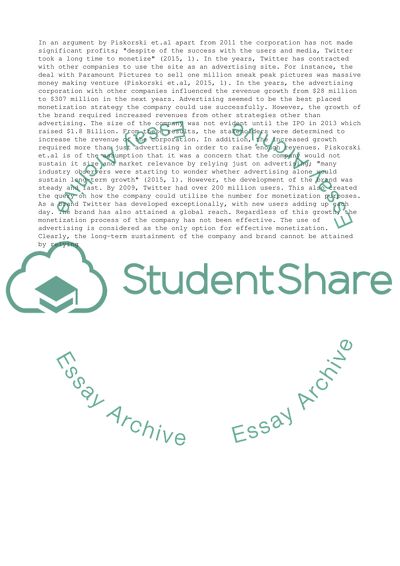Cite this document
(TWITTER CASE STUDY Example | Topics and Well Written Essays - 2250 words, n.d.)
TWITTER CASE STUDY Example | Topics and Well Written Essays - 2250 words. https://studentshare.org/business/1869916-twitter-case-study
TWITTER CASE STUDY Example | Topics and Well Written Essays - 2250 words. https://studentshare.org/business/1869916-twitter-case-study
(TWITTER CASE STUDY Example | Topics and Well Written Essays - 2250 Words)
TWITTER CASE STUDY Example | Topics and Well Written Essays - 2250 Words. https://studentshare.org/business/1869916-twitter-case-study.
TWITTER CASE STUDY Example | Topics and Well Written Essays - 2250 Words. https://studentshare.org/business/1869916-twitter-case-study.
“TWITTER CASE STUDY Example | Topics and Well Written Essays - 2250 Words”. https://studentshare.org/business/1869916-twitter-case-study.


